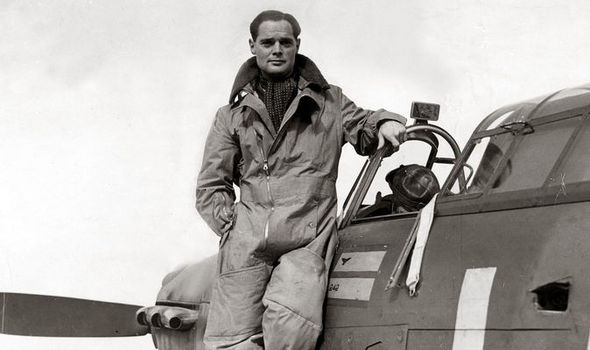I Can’t…….
Posted on September 4, 2013
Whenever I’m faced with something I’ve never done before, or something that seems impossibly difficult and I’m tempted to say “I Can’t do that”, I am reminded of a World War II Royal Air Force fighter pilot by the name of Douglas Bader.

Douglas Bader
By all accounts, he was something of an “enfant terrible” during his youth, but a natural pilot who flew effortlessly even from his very first solo flight in 1929. He was such a skilled pilot that by 1931, he was the third member of the RAF Demonstration Team (akin to today’s US Air Force Thunderbirds). The combination of his skill, youth and bravado came together in an unfortunate manner in December, 1931.
His squadron had been re-equipped with a new type of aircraft a couple of weeks prior, and he had just received a stern warning from his squadron commander about breaking the rules concerning low-level aerobatics. However, a dare from a couple of civilian pilots made him see red, and he took off to show these doubters his skill. He misjudged a maneuver at very low altitude and crashed due to his wingtip touching the ground. Both of his legs were badly injured, and it was a miracle he survived the crash at all.
At the hospital, his right leg was immediately amputated above the knee, and within a few days it became evident that his left leg was badly infected. That leg was amputated below the knee. After several very close calls over the ensuing months, he began to recuperate from his injuries and was fitted with artificial legs and started to learn how to walk again. When the doctors suggested it would be easier for him if he used a cane, he vehemently refused and said he would never use one.
By 1934, he had learned to drive a car again, been re-certified as a pilot again, married a girl he had met during his convalescence, and been mustered out of the RAF as “100% disabled”. By 1938, he had learned to play golf and had achieved a 5 handicap. At this time, due to the gathering war clouds over Europe, he began to pester RAF Fighter Command to take him back. These entreaties fell on deaf ears until September, 1939 with the outbreak of the war in Europe. He was sent to flight school to see if he could fly the more modern aircraft in the RAF inventory, and passed with flying colors.
He saw his first action over the Dunkirk evacuation in June of 1940, and by the end of July, 1940, he had been given command of a fighter squadron that took part in the Battle of Britain. By August of 1941, his score stood at 22 ½ kills, but he was shot down over France and captured. His “enfant terrible” personality was in full bloom during his captivity, escaping from POW camps several times until the Germans threatened to take away his artificial legs.
After the end of the war, Bader began a personal crusade to encourage and assist the many amputation victims of the war. While he never sought hero-worship, he was the living embodiment of a hero to the amputees that he worked with. In 1976, he was knighted for these efforts by Queen Elizabeth.
No one I know has ever been faced with what Douglas Bader was faced with at the age of 21. Yet, he managed to live a normal life and achieve magnificent things without ever saying “I Can’t”. His story has always inspired me whenever I hesitate to do something because it will be too difficult.
For more information, check out http://en.wikipedia.org/wiki/Douglas_Bader
Also, the Military Channel has a pretty good docu-drama on his life, an episode of the new series “Air Aces”, which airs on Sunday Evenings.
There was also a movie made about his life, “Reach For The Sky” starring Kenneth More. This was based on the biography of the same name, by Paul Brickhill.
